On Inspiration
Featuring an interview with Giulietta Pinna of Limonata Creative and Prop-Up Shop
Giulietta Pinna is the creative mind behind Limonata Creative and Prop-Up Shop. After working in fine wine, fine art, management, and sales, Giulietta found her calling as a prop stylist, art director, and creative director in 2016, and has gone on to style some of the most beautiful scenes I’ve seen. Her work is such an inspiration to me, as is her dedication to growing and protecting the industry as a whole through her work in contracts and standardization. I knew I wanted to bring her in to talk about anything and everything, and this interview is truly one for the books. I’ve gone back and read it over and over, finding new gems every time I do. Enjoy this—Giulietta is a treasure. PS: If you prefer to listen to this, you can! Just click the play button at the top of the post, and Ms. Substack will read it for you.
Giulietta was kind enough to grant me permission to share a small sampling of her work. Enjoy these gorgeous photos! I also want to include a special call out to the teams that Giulietta collaborated with to make these photos happen:
Poem-Inspired Beverage Shoot
Photographer: @kyledorosz, Creative Producer, AD, Set/Props + Graphics: @limonatacreative, Wardrobe Styling + Talent Producer: @dwdaniellewood, Food + Drink Styling: @emiliefoz, Models: @nickthekidd , @madsthegoat , @lilyarlin, Talent Agent: @mistyjamestalentagent, Seating & Accent Tables: @goodneighborshop, Photo Studio, Props & Surfaces: @propupshopbmore
Dirty Dines Set
CD, AD, Set Design, Prop Styling: @limonatacreative, Photography: @kategrewal, Food Stylist: @lifeofafoodstylist, Wardrobe Stylist: @dwdaniellewood, Makeup Artist: @pk.mua, Hair Stylist: @awardstyles, Agent + Models: @kingsleymodels w/ @troypattersondcrealtor @gracefulyogi , Agent + Model: @theartistagency w/ Marianne, Model: @mikequindlen, Photo Assistant: @emschultzphoto, Photo Studio + Prop House: @propupshopbmore
This conversation has been condensed and edited for clarity. Enjoy!
Laura Scherb: I’m a huge fan of your work, as you know, and I saw one of the posts you put up recently about a shoot that was inspired by a poem you wrote. I’m just so taken with this concept, and I knew I wanted to talk with you about your process, what you do, where you find inspiration, and all the things.
Giulietta Pinna: First of all, thank you so much for your kind words! In terms of your question about what I do: I art direct, creative direct, as well as set design and prop style.
LS: Real quick, would you mind to tell me how you differentiate between creative direction and art direction?
GP: So that's a really interesting question. And I think everybody kind of has their own response to that, but for me, creative direction boils down to the why. Why are we all congregating? What is the story? It's somebody who comes to the table with the original light bulb idea, but they might not necessarily have the tools to understand or visualize how to make that story come to life through colors, props, set design, aesthetic, and that's where art directors come in. Art Directors are the people responsible for bringing the visual story to life, not just the idea. And so that's how those two differentiate. And that's how I worked it out in my mind and how I do it in my business—creative direction is about ideation and art direction is about solidifying the ideation into visuals.
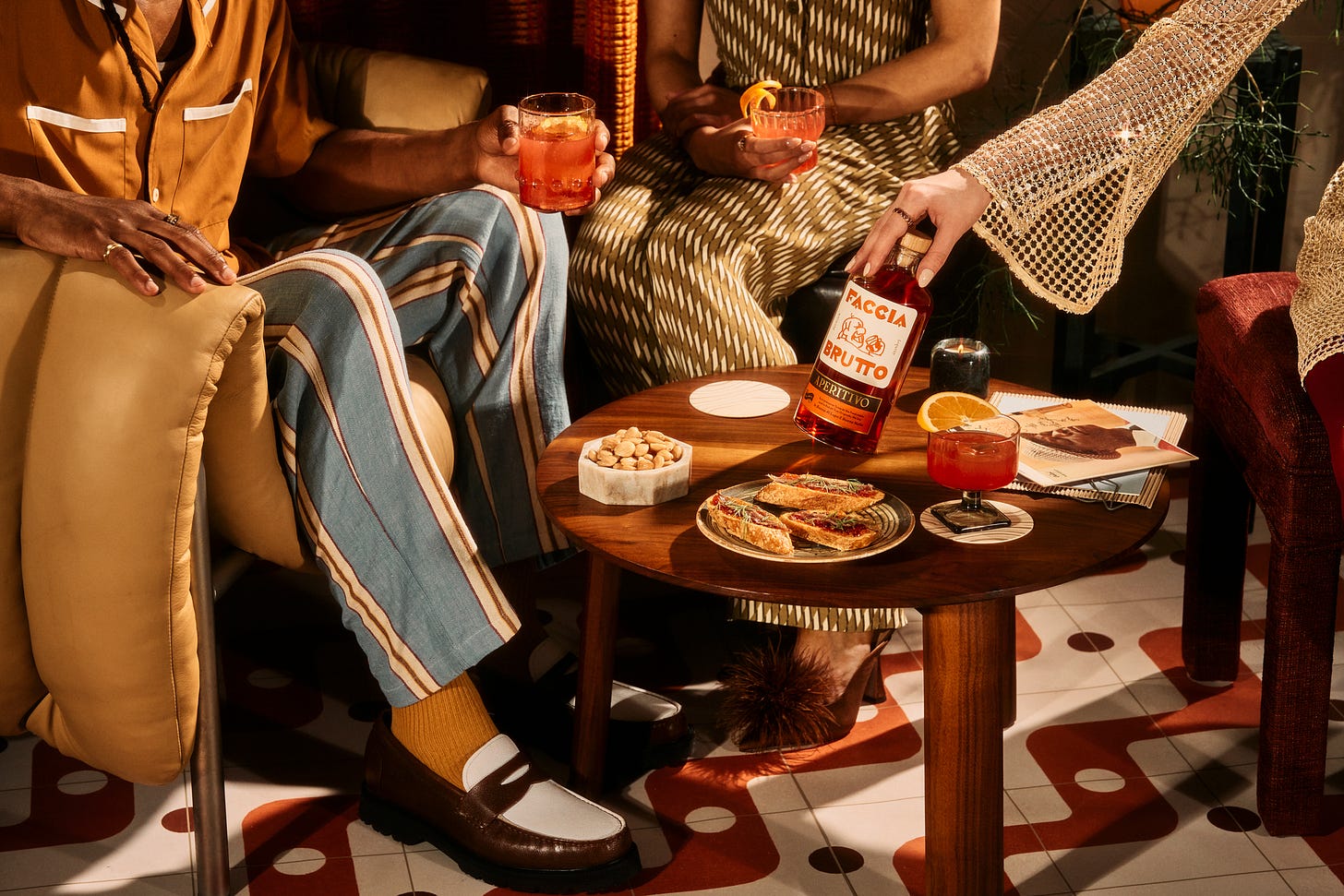
LS: I love that.
GP: And then of course, you have different layers underneath art direction—set design, which is actually the actual construction of the set and how it all looks, figuring out the type of scene or what the set should try to mimic; and prop styling, which are all smaller objects and decorative objects, stands, or props that are used to highlight the product or the story with. I’ve had to juggle all of these disciplines because the area where I’m based (Baltimore / Washington, DC) is pretty small in terms of people who do this kind of work, so I've kind of had to dabble in a little bit of everything.
In terms of inspiration: while I've always been a really creative person, after high school, I lost my way because I didn't really know that I could make a living with my creativity. I’m the first born daughter of a family that partially immigrated to the US (my dad's from Italy, as are all my grandparents; my mom is first-gen American), so a lot of the ethos I think that some immigrant children experience is that their parents want them to have very stable, comfortable, American dream-type jobs. Creative jobs have a stigma of not being as secure or profitable or “safe.” So I pursued jobs I believed would be acceptable to my parents for a long time. Throughout my career, I was in sales, first fine art in NYC, and then fine wine once I moved to Baltimore. I was always working with and/or befriending artists and all sorts of creatives, but never gave myself the space to be one myself. And it wasn't until I moved back to Baltimore, when I realized that I was no longer the person I really wanted to be and became really depressed. After a few years, my husband encouraged me to quit my job in wine sales, so I did. And that’s when I realized I had this hunger to change things; to make things. And when I did that, I discovered I wanted to style—that it was something I've always wanted to do—so I jumped in and started doing it. Its been seven years now, and I haven’t looked back since. It’s this journey that inspires me to keep going. And hopefully, my story can inspire others to try and tap into their creativity too, especially if they feel like they lost it, like I once did.
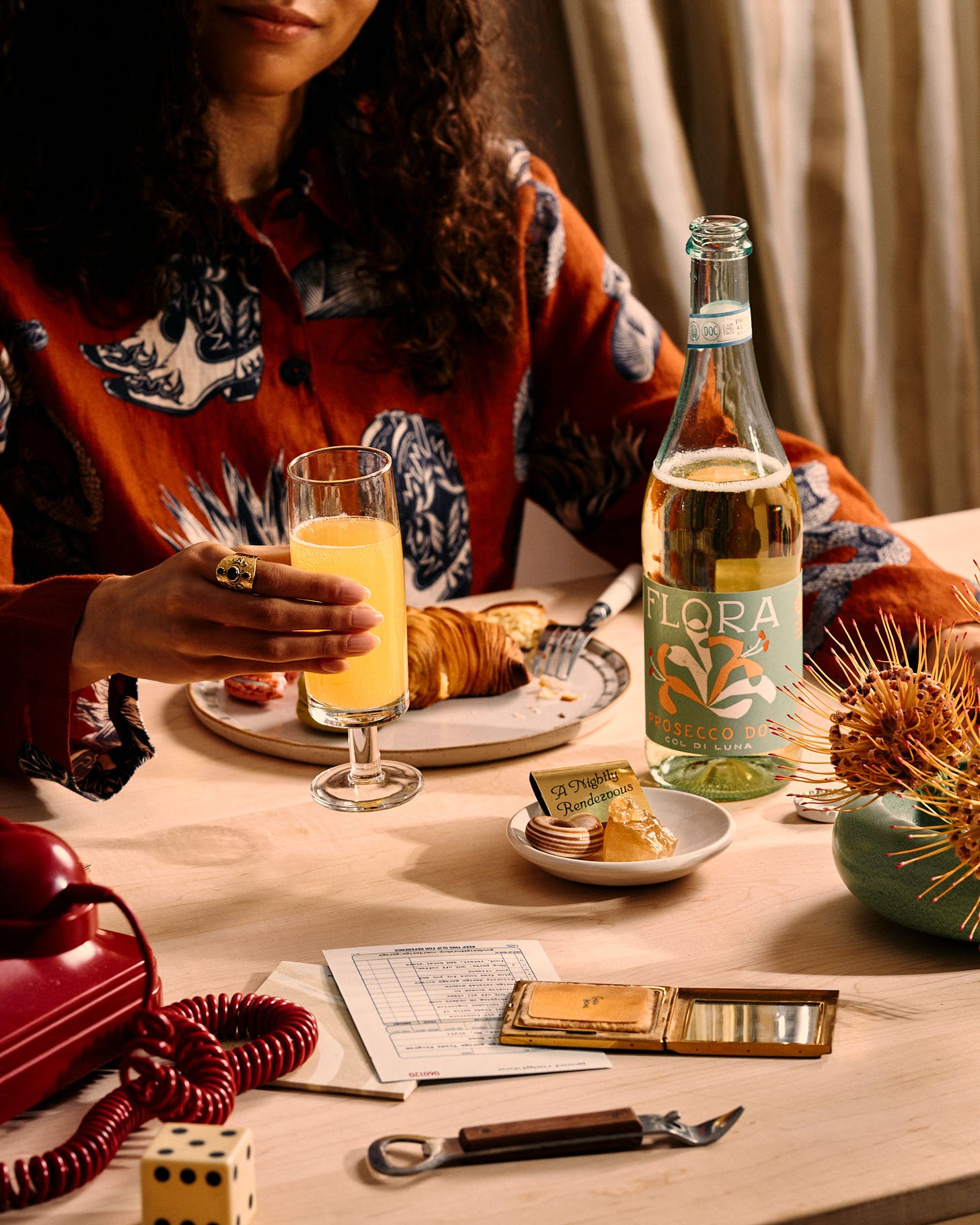
LS: Wow.
GP: And so my creative process, from the beginning, has always started with a search to find something that inspires me or catches my eye or makes me feel something. It could be a walk, it could be something about my family history, it could be nature, and then I kind of just allow my brain to do what it wants to do, whatever feels the most organic in the moment or as a result of whatever experience I had or memory that I had. And so with the project you mentioned, where I wrote the poem, when I was conceptualizing it, I felt a need to write. So I picked up my laptop and started typing. I allowed words to flow out of my mind and body—just another way of art making.
We (my husband + business partner, Nate and I) wanted to do a drink-focused cocktail shoot that held the essence of being in a boutique hotel of sorts—a place that gives people wanderlust, or that they would want to visit in a different country, let's say South America, or somewhere in the Mediterranean.
So I started thinking about that location. What does it feel like on my skin there? The sun is warm. What am I smelling? Oranges. Things started just coming to me. And it's almost meditative in a way, where you're putting yourself in a place that you want to be in. And then words started forming, they were rhyming, and I realized I was composing a poem. So I started writing that down, just went for it and kept going. Here’s what I wrote:
“Take us away
to a dreamy place,
one filled with light,
dappled with grace.
Lustful for sun, sand and sea;
Catching the scent
of the orange trees.
We drink and dine
on the simplest things,
but in the eyes of the sky,
we are bohemian kings.
Leaning into nature,
feeling the heat,
pleasuring in it all,
with a retro beat."
It felt really special that I wrote this thing and that's what I ended up using as the main idea for the set design—the emotions I felt and the poem that I wrote were the driving forces. It felt cool to tap into another part of my brain, link it to a styling project and make work out of it. So I'm really glad that you enjoyed that.

LS: I really did. So was that a personal project that you were focusing on when the poem came to you? Or was this a client project?
GP: it was a personal project. One of our best friends is a really talented portrait photographer in New York, Kyle Dorosz. Kyle recently decided that he wanted to try a different genre and diversify his portfolio a little bit more into food and beverage. So this shoot was a test shoot, essentially to give both of us and our whole team a new body of work that we could stand behind and be really proud of. Also, hopefully have a client see it and potentially hire us individually or as a team. We collaborated with a large group of talent for that shoot and approached it just like it was a job a client was hiring us for. I feel like that's really been the only way that I've seen my work grow; clients come to me when they see something that I put out there in the world. Test shoots are great for that.
LS: Yeah, I was just about to ask what is most effective in terms of attracting new clients: personal test shoots or client projects, or both?
GP: A little bit of both. I mean, that's a tricky question, though. I don't always put all the work that I do for my clients, on my portfolio, or my Instagram, for example, because I only want to showcase the work that I feel really resonates with me creatively, ethically and that I’m truly proud of. I want that work to keep coming back to me. And so I do think that we have to be super, hyper critical about what we share with our audiences or clients. Because if you share something you don't like doing, people are just gonna assume you want more of that. I'm sure you know that.
LS: Yeah, it's so tricky. And, you know, I feel like that's one of the things that over the last six months I've been really struggling with. I'm always so thankful when we have client work, obviously. But I find myself being almost creatively wrung dry in a way. I can tell that I’m not working my brain in a new way. I'm not getting to test different lighting or pull different props in, and when I set aside the time to do those personal projects or test shoots, it just revitalizes me in such a magical way. And it's always about keeping that balance. And just recognizing when you need to put together a huge amount of time and resources and people into getting that creative stuff out there versus taking another client to maintain the business.
GP: Totally, and it is so hard. And also, like I said, when you're in the hamster wheel, sometimes you forget that just you need to step back and take a breather and do something for yourself.
LS: Okay, so I want to shift gears for a second and talk to you about travel specifically. As someone who has seen so much of your work, I have to assume that travel inspires you.
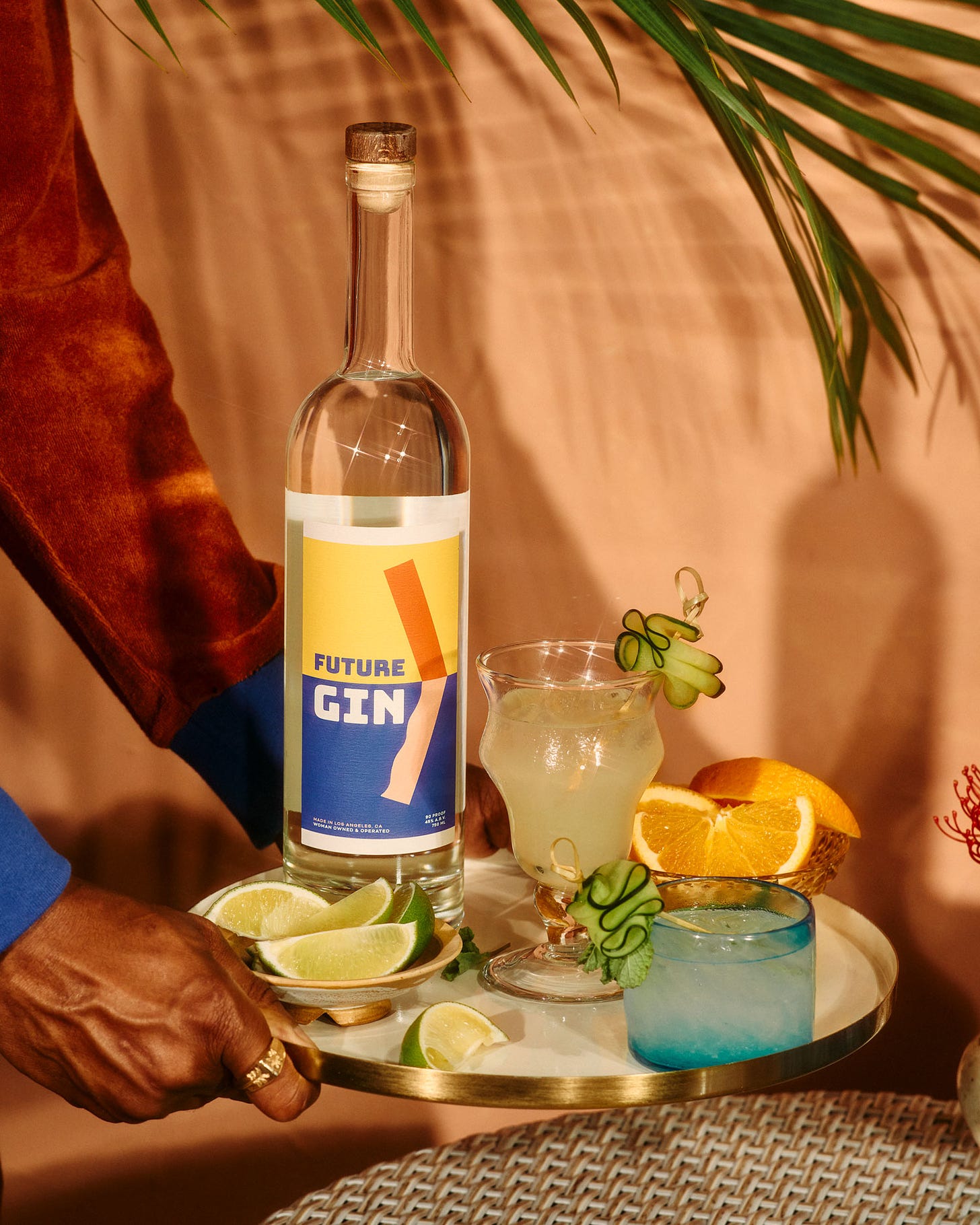
GP: Oh, my god, yeah. I feel like it does most people—getting out of your environment is great for that. When COVID happened, I got this extreme bout of wanderlust. During that time, I started feeling like if I didn’t see something else, outside of my norm in the coming months, a part of me would just not survive. So we just decided: we've always wanted to go travel for six months, let's just go do it. And we did. And it was such a learning experience.
We went to South America to Peru, Colombia, and Mexico, and in Asia to Thailand, Vietnam, Bali, and then Istanbul. Just being in these new cities, environments and cultures… understanding how people do their crafts there…it was pivotal to me as a prop stylist. My eyes are always looking at objects and how people decorate or I’m tuning into how an interior feels, the smells, the light, and weaving that into a story. Having that tangible travel experience was eye opening—I know now what it feels like to be there, what the spaces visited looked like. You know? So I feel like it's very helpful for the work that I do, but also just creatively, it's stimulating to see things differently. You see colors and how things intertwine so differently than what you're used to at home. And I think it really helps you to evolve and find new inspiration as well.
LS: So the whole time you were traveling, were you sourcing as well?
GP: Yes, I did. I was really strategic about it. Before we left, I saved up a budget for my business in order to procure new things around the world. And so I worked within the confines of that budget, obviously, but every country that we went to, I would send a big DHL box back home. Right now, I have a few projects in the pipeline that sort of deal with what I brought back home. So yeah, a big part of traveling was procuring things and curating and amassing more of my collection with objects that I didn't have before, and it was really cool. I love shopping haha.
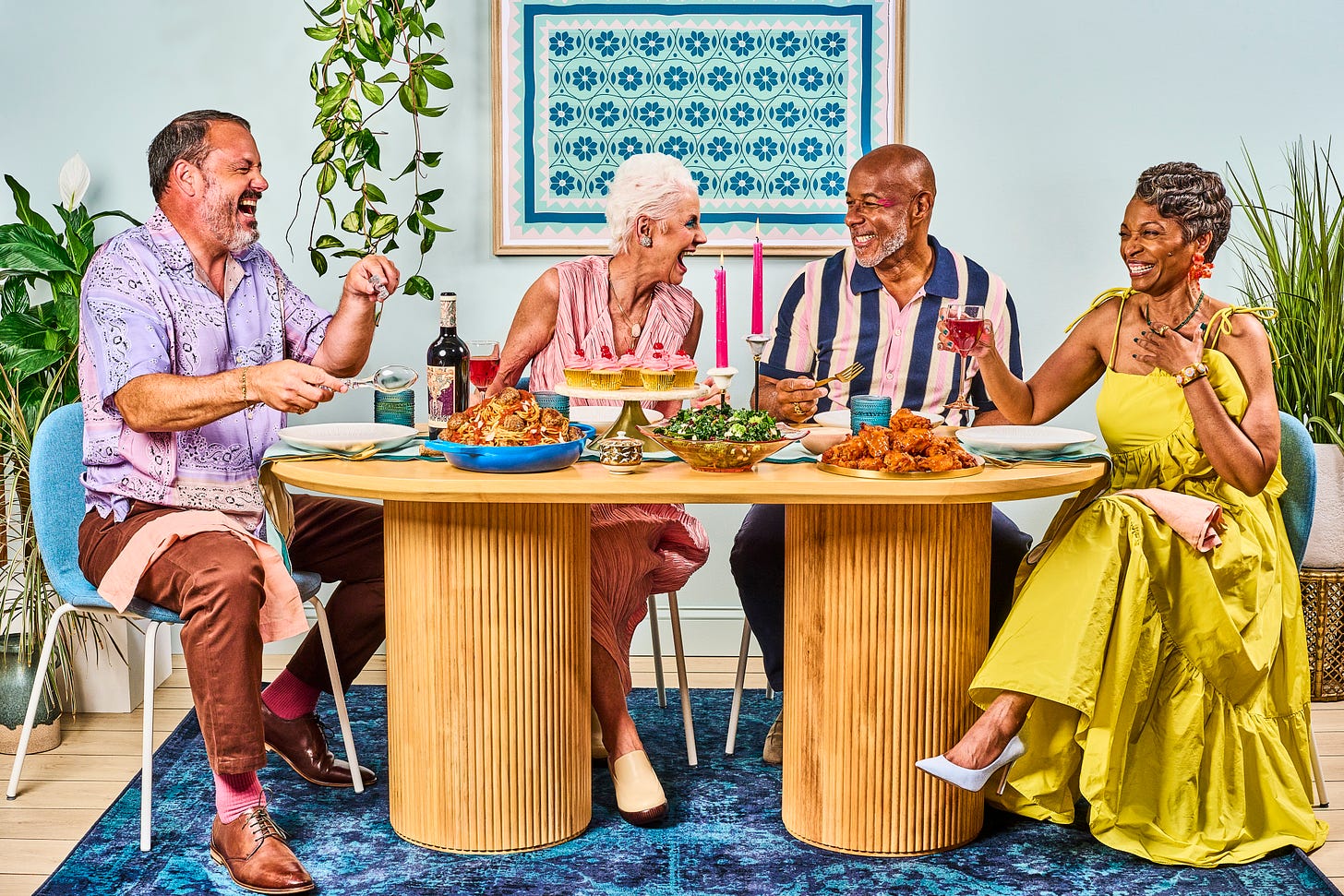
LS: I mean, who doesn't? I feel like that must have just supercharged you as a prop stylist to be able to say to your clients: “I was in these places, I saw these things, I saw these people making things differently, using things differently.” It really shines through in the work that you do, and it just sets you apart.
GP: Thank you so much. I have seen that actually. When I bring these special objects that I've accrued around the world and tell the story of where I got these things, it really does resonate with my clients too. It's good for their work to have items that are not just from big box stores, but that share something historical, vintage or completely unique from a different place. That adds much more depth and meaning to their story too, you know?
LS: Totally. So I love the way that you talk about storytelling as a part of your work. And I think that that's one of the things that resonates most with me when I when I saw that post about the poem—I just love that and I am so glad to hear that clients resonate with that also. I think that that's one of the things that when I'm going through my creative, dry spells, I'm always searching for—a client or partner who appreciates that. And I just love hearing that about your work.
GP: Thank you. I feel like most the time, I'm just like, I don't know who's reading this out there, but you are! That means a lot.
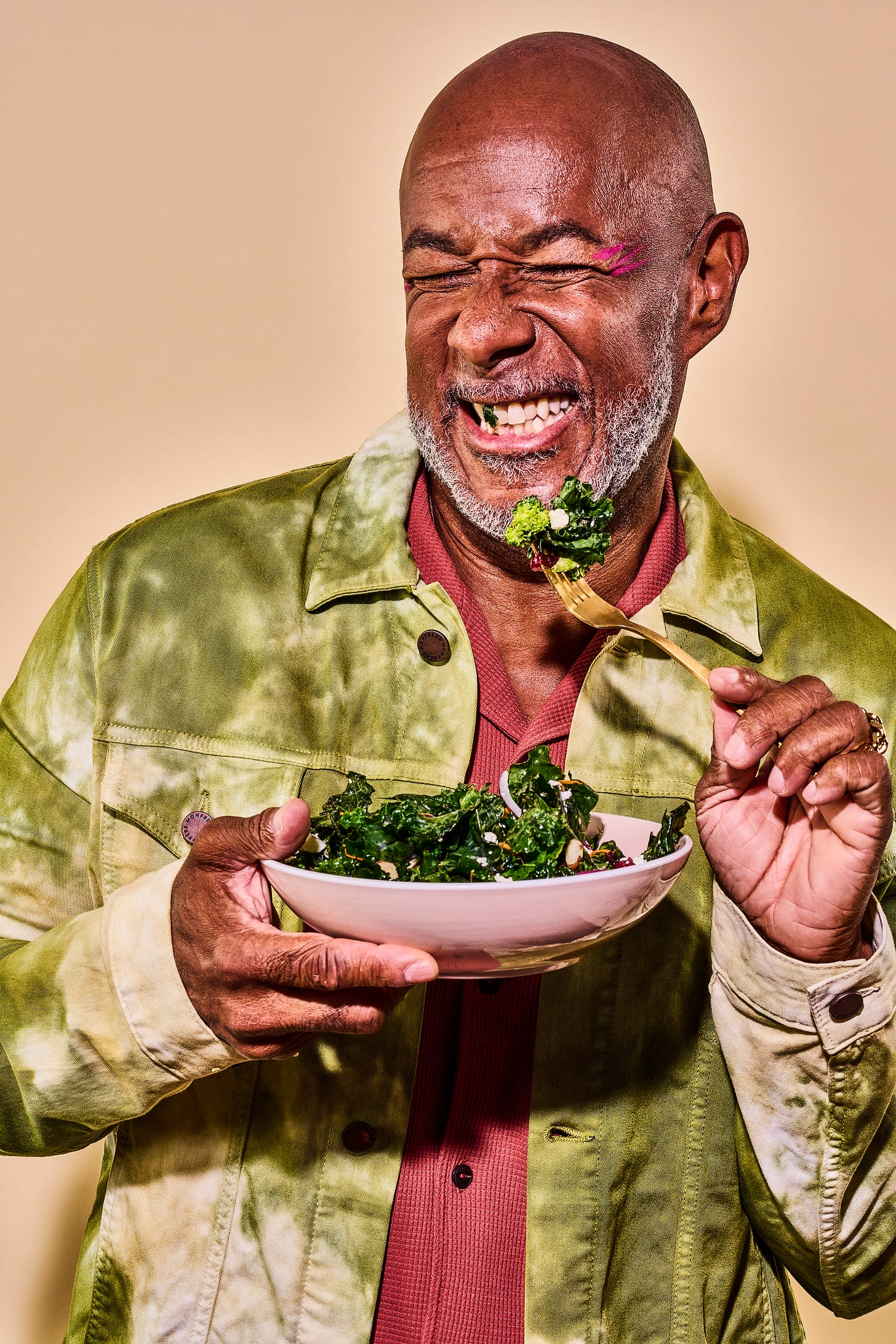
LS: I am! And, I have to admit, I’m asking these questions about travel selfishly. Last fall, my husband and I spent three weeks in Italy, and it was so nice to be able to take that time off and just feel like I was seeing new kinds of light (I'm convinced that the light there is different), and new colors and even just the textures of the food. I mean, I was just blown away. And I felt like I came back and I had just new spirit injected into my soul. It was so valuable for me. And so now, I'm very fixated on this idea of traveling long term to be able to just chase that inspiration and see where it takes me. And I think it's so cool that you guys were able to do that.
GP: You know, I was kind of upset with myself for a long time. Like, “why am I not traveling more, it sucks that I'm doing this freelance job because it’s preventing me from traveling.” And that sacrifice of not seeing the world was striking a negative chord with me that I really didn't like. And, so, you know, we saved up and six years went by. But then we took six whole months off and traveled the world. I don't know why I didn't realize it before, but there's nothing saying that we have to be conventional in the way we use our vacation time and the way that we travel and get refreshed and inspired.
LS: Yeah, definitely. Knowing that we had this trip coming up in September, we decided not to go anywhere this spring or summer, and it's been an interesting exercise in finding places to go where can I go look at something new or feel different. And even just, you know, going downtown for a day and looking big buildings has really been scratching that itch.
So I want to let you get back to your busy life. But I just have to say again, like thank you so much for the work that you do and continuing to put it out in the world because it really is inspiring.
GP: Thank you—that really does mean a lot. It really is so nice to hear that somebody actually reads and enjoys what I do, because I enjoy it. And so it's nice to hear that things that you put out there are resonating with other people too.
The last thing I just wanted to put out there for you—I’d like to remind myself also—is that there's a lot of pressure with the marketing apps that we use in to get like a million likes or comments, or, you know, you feel like you're part of this, like system of getting some sort of specific feedback on Instagram. That’s why I love hearing from you and having these conversations one-to-one. I think it's so special. But remember that what you put out there should be focused on: what do I want to do? What feels good for me today? What feels right for me today? So just remember that even if it doesn't vibe with people through the actual liking on Instagram, it's not that nobody saw it or nobody heard it. It's supposed to be just for you.
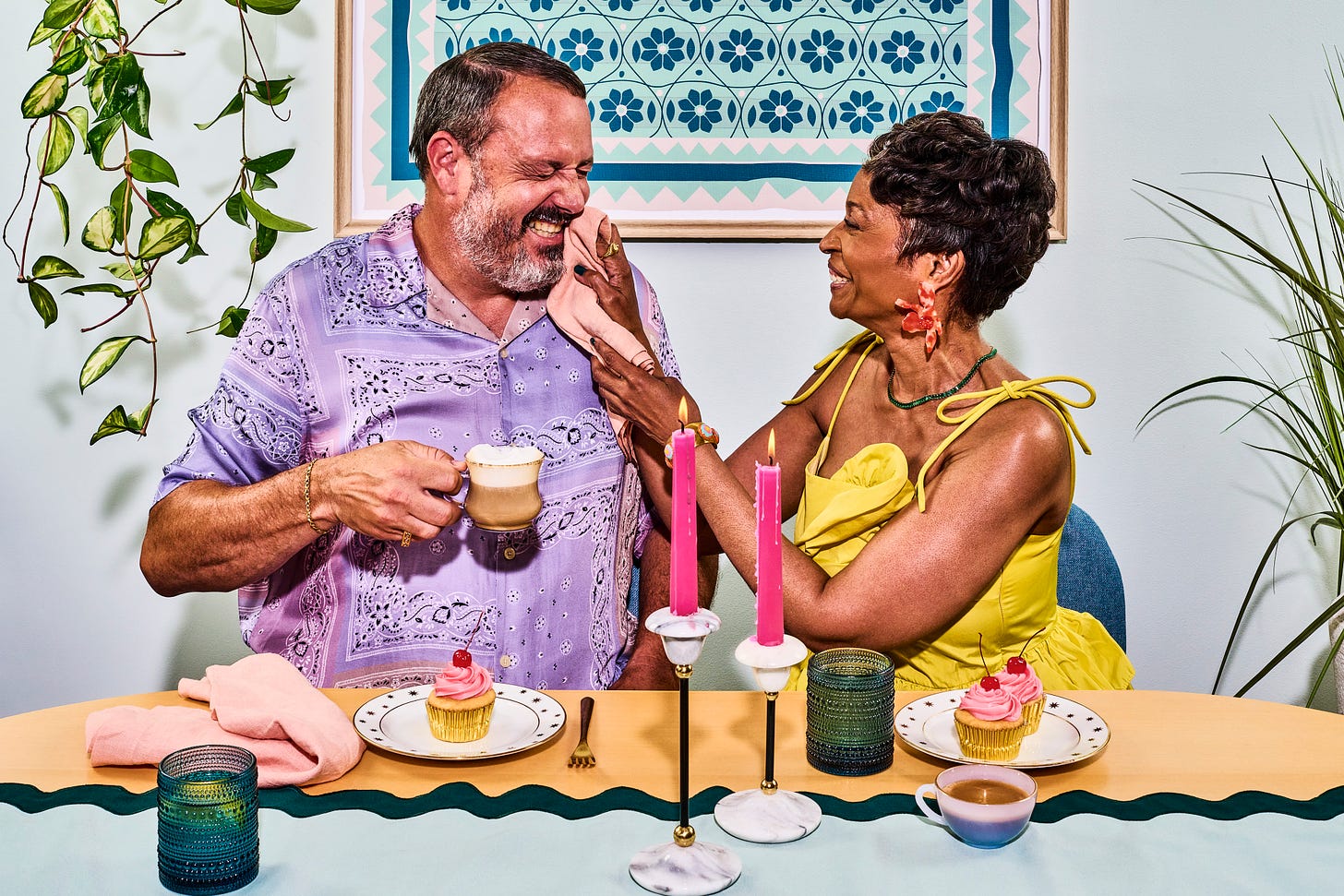
LS: I love that. Okay, I'm taking that energy into this week and some personal projects I have on deck. I am excited that you have some time off coming down the horizon, but also can't wait to see what you're working on right now.
GP: Thank you so much. I appreciate it. And I'm excited to follow you and continue following and supporting!
You can follow Giulietta’s work at Limonata Creative and Prop-Up Shop. Prepare to be amazed! See you back here on Friday for butternut squash soup. I also want to include one last call out to the teams that Giulietta collaborated with to make these photos happen. Please follow, support, and hire these artists!
Poem-Inspired Beverage Shoot
Photographer: @kyledorosz, Creative Producer, AD, Set/Props + Graphics: @limonatacreative, Wardrobe Styling + Talent Producer: @dwdaniellewood, Food + Drink Styling: @emiliefoz, Models: @nickthekidd , @madsthegoat , @lilyarlin, Talent Agent: @mistyjamestalentagent, Seating & Accent Tables: @goodneighborshop, Photo Studio, Props & Surfaces: @propupshopbmore
Dirty Dines Set
CD, AD, Set Design, Prop Styling: @limonatacreative, Photography: @kategrewal, Food Stylist: @lifeofafoodstylist, Wardrobe Stylist: @dwdaniellewood, Makeup Artist: @pk.mua, Hair Stylist: @awardstyles, Agent + Models: @kingsleymodels w/ @troypattersondcrealtor @gracefulyogi , Agent + Model: @theartistagency w/ Marianne, Model: @mikequindlen, Photo Assistant: @emschultzphoto, Photo Studio + Prop House: @propupshopbmore



